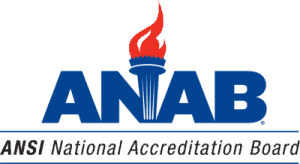IQ/OQ/PQ in Equipment Verification and Validation

Ensuring laboratory equipment operates as expected is critically important to the validity of results generated by the laboratory. As part of process validation through IQ/OQ/PQ, laboratories verify and validate that equipment performs to pre-determined specifications or criteria.
ISO/IEC 17025:2017 Validation Requirements
ISO/IEC 17025 contains requirements for laboratories, including requirements for equipment used to make measurements within the laboratory. The requirements are not prescriptive, which gives laboratories latitude to implement the requirements in a manner that works best for each individual laboratory. In general, the laboratory must verify that equipment conforms to specified requirements before being placed or returned into service. Additionally, the equipment must be capable of achieving the measurement accuracy and/or measurement uncertainty required to provide valid results.
There are many different ways to verify and validate equipment, one being equipment IQ/OQ/PQ (installation qualification / operational qualification / performance qualification). Typically used in the manufacturing environment, it can also be used by laboratories for equipment or instruments used to make measurements. The steps in IQ/OQ/PQ ensure that equipment conforms to specified requirements and that the equipment is capable of providing valid results from the measurements performed.
What Is IQ/OQ/PQ? – What Does IQ/OQ/PQ Stand For?
IQ Meaning
IQ stands for installation qualification. In this step of process validation, the installation of equipment is verified to ensure that equipment and instrumentation has been installed in accordance with the manufacturer’s requirements. Oftentimes, the manufacturer, or authorized distributor, performs IQ. If the laboratory performs IQ, the manufacturer may offer a checklist to follow to ensure the IQ contains all relevant and necessary checks.
OQ Meaning
OQ stands for operational qualification. OQ can be considered a risk assessment step in process validation. Process control limits are determined. Potential failure modes are identified and action levels documented. Equipment is inspected to identify anything that can impact final results, such as features, functionality and operating ranges. OQ is performed after installation and repeated if any significant maintenance or modifications are made to the equipment.
PQ Meaning
PQ stands for performance qualification. It is the final step in verifying, validating, or qualifying equipment. User requirements are evaluated to ensure that the requirements are met. Equipment is verified to perform within the acceptable and specified range under normal operating conditions. The focus of the PQ step is to validate process stability over time to challenge the functionality of the equipment. Data summaries are generated as part of the reporting process, along with any nonconformances that may have occurred and that were corrected as part of the overall IQ/OQ/PQ process.
IQ/OQ/PQ for Laboratory Equipment Validation
IQ/OQ/PQ is one way for laboratories to document objective evidence that equipment or instruments are installed correctly, operate effectively and provide valid results under normal operating conditions. It incorporates risk-based thinking into the verification of equipment or instruments and provides confidence in the operation and performance of equipment within the laboratory. Combined with other activities that ensure the validity of results, IQ/OQ/PQ ensures that results are generated from verified and validated equipment.
Learn more about ensuring the validity of results in laboratories by reading our past blog post, Ensuring the Validity of Results in ISO/IEC 17025:2017.






